Filter by
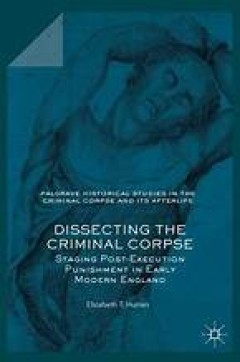
Dissecting the Criminal Corpse
Those convicted of homicide were hanged on the public gallows before being dissected under the Murder Act in Georgian England. Yet, from 1752, whether criminals actually died on the hanging tree or in the dissection room remained a medical mystery in early modern society. Dissecting the Criminal Corpse takes issue with the historical cliché of corpses dangling from the hangman’s rope in crim…
- Edition
- 1
- ISBN/ISSN
- 978-1-137-58249-2
- Collation
- -
- Series Title
- Palgrave Historical Studies in the Criminal Corpse and its Afterlife
- Call Number
- XXX, 326
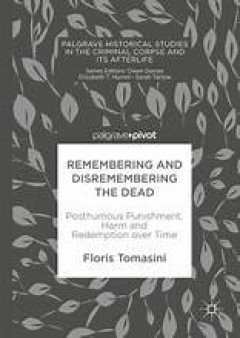
Remembering and Disremembering the Dead
This book is open access under a CC BY 4.0 licence. This book is a multidisciplinary work that investigates the notion of posthumous harm over time. The question what is and when is death, affects how we understand the possibility of posthumous harm and redemption. Whilst it is impossible to hurt the dead, it is possible to harm the wishes, beliefs and memories of persons that once li…
- Edition
- 1
- ISBN/ISSN
- 978-1-137-53828-4
- Collation
- -
- Series Title
- Palgrave Historical Studies in the Criminal Corpse and its Afterlife
- Call Number
- VII, 103
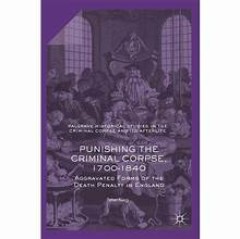
Punishing the Criminal Corpse, 1700-1840
This book analyses the different types of post-execution punishments and other aggravated execution practices, the reasons why they were advocated, and the decision, enshrined in the Murder Act of 1752, to make two post-execution punishments, dissection and gibbeting, an integral part of sentences for murder. It traces the origins of the Act, and then explores the ways in which Act was actually…
- Edition
- 1
- ISBN/ISSN
- 978-1-137-51361-8
- Collation
- -
- Series Title
- Palgrave Historical Studies in the Criminal Corpse and its Afterlife
- Call Number
- XV, 212
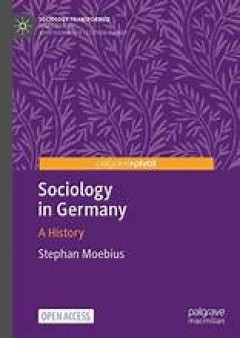
Sociology in Germany
This open access book traces the development of sociology in Germany from the late 19th century to the present day, providing a concise overview of the main actors, institutional processes, theories, methods, topics and controversies. Throughout the book, the author relates the discipline’s history to its historical, economic, political and cultural contexts. The book begins with sociology in…
- Edition
- 1
- ISBN/ISSN
- 978-3-030-71866-4
- Collation
- -
- Series Title
- Sociology Transformed
- Call Number
- XI, 222
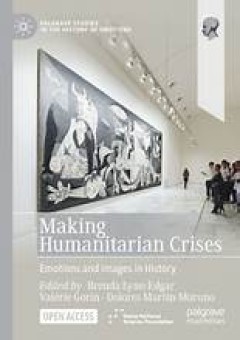
Making Humanitarian Crises
This open access collection of essays explores the emotional agency of images in the construction of ‘humanitarian crises’ from the nineteenth century to the present. Using the prism of the histories of emotions and the senses, the chapters examine the pivotal role images have in shaping cultural, social and political reactions to the suffering of others and to the establishment of the inte…
- Edition
- 1
- ISBN/ISSN
- 978-3-031-00824-5
- Collation
- -
- Series Title
- Palgrave Studies in the History of Emotions
- Call Number
- XII, 186

East Central Europe Between the Colonial and the Postcolonial in the Twentiet…
This open access book explores the ambiguity of East Central Europe during the twentieth century, examining local contexts through a comparative and transnational reworking of theoretical models in postcolonial studies. Since the early modern period, East Central Europe has arguably been an object of imperialism. However, at the same time East Central European states have been seen to be coloni…
- Edition
- 1
- ISBN/ISSN
- 978-3-031-17487-2
- Collation
- -
- Series Title
- Cambridge Imperial and Post-Colonial Studies
- Call Number
- XII, 265

Making Humanitarian Crises
This open access collection of essays explores the emotional agency of images in the construction of ‘humanitarian crises’ from the nineteenth century to the present. Using the prism of the histories of emotions and the senses, the chapters examine the pivotal role images have in shaping cultural, social and political reactions to the suffering of others and to the establishment of the inte…
- Edition
- 1
- ISBN/ISSN
- -
- Collation
- -
- Series Title
- Palgrave Studies in the History of Emotions
- Call Number
- XII, 186

Innovation in Bayern
Dieses Open-Access-Buch befasst sich mit der Einstellung der bayerischen Militärführung in Hinblick auf die Rezeption als auch Adaption technischer Innovation bzw. deren ersten praktischen Anwendung im Krieg von 1866. Das 19. Jahrhundert stellte das bayerische Königreich vor mehrere Herausforderungen. Die militärische Partizipation an den Napoleonischen Kriegen endete zwar erfolgreich…
- Edition
- 1
- ISBN/ISSN
- 978-3-658-39561-2
- Collation
- -
- Series Title
- -
- Call Number
- VI, 311

Researching with Proximity
This open access book presents a series of speculative, experimental modes of inquiry in the present times of environmental damage that have come to be known as the age of the Anthropocene. Throughout the book authors develop more nuanced ways of engaging with the environmentally vulnerable Arctic. They counter distancing, exoticising, and even apocalyptic imaginaries of the Arctic by staying p…
- Edition
- -
- ISBN/ISSN
- 978-3-031-39500-0
- Collation
- XIX, 215
- Series Title
- -
- Call Number
- -
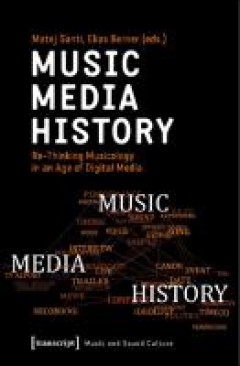
Music - Media - History. Re-Thinking Musicology in an Age of Digital Media
Music and sound shape the emotional content of audio-visual media and carry different meanings. This volume considers audio-visual material as a primary source for historiography. By analyzing how the same sounds are used in different media contexts at different times, the contributors intend to challenge the linear perspective of (music) history based on canonic authority. The book discusses A…
- Edition
- -
- ISBN/ISSN
- -
- Collation
- -
- Series Title
- -
- Call Number
- 780.7 MUS m
 Computer Science, Information & General Works
Computer Science, Information & General Works  Philosophy & Psychology
Philosophy & Psychology  Religion
Religion  Social Sciences
Social Sciences  Language
Language  Pure Science
Pure Science  Applied Sciences
Applied Sciences  Art & Recreation
Art & Recreation  Literature
Literature  History & Geography
History & Geography